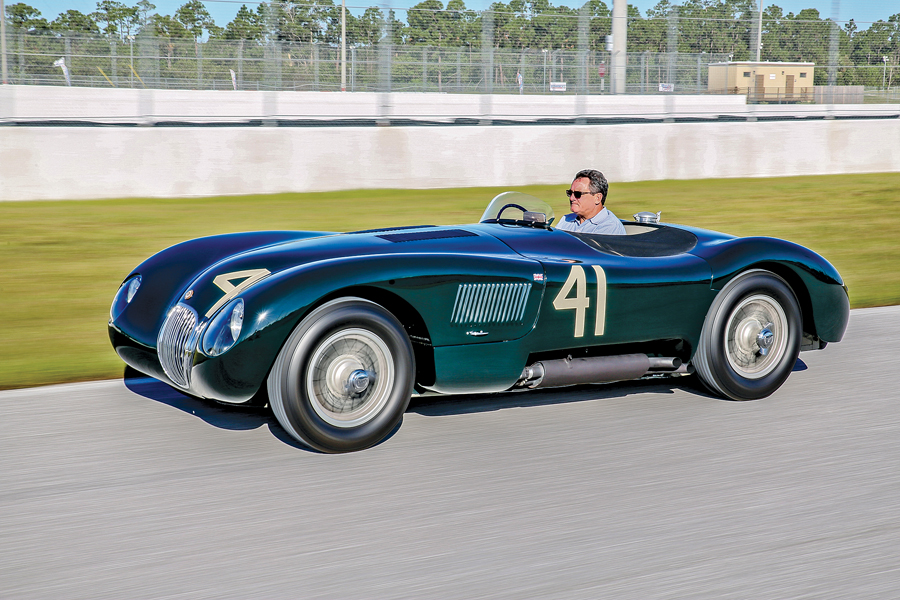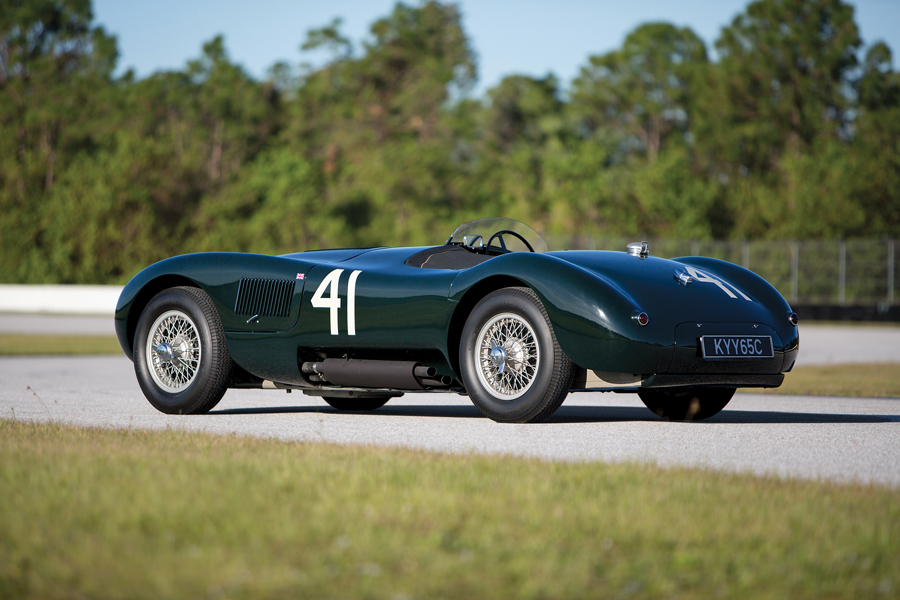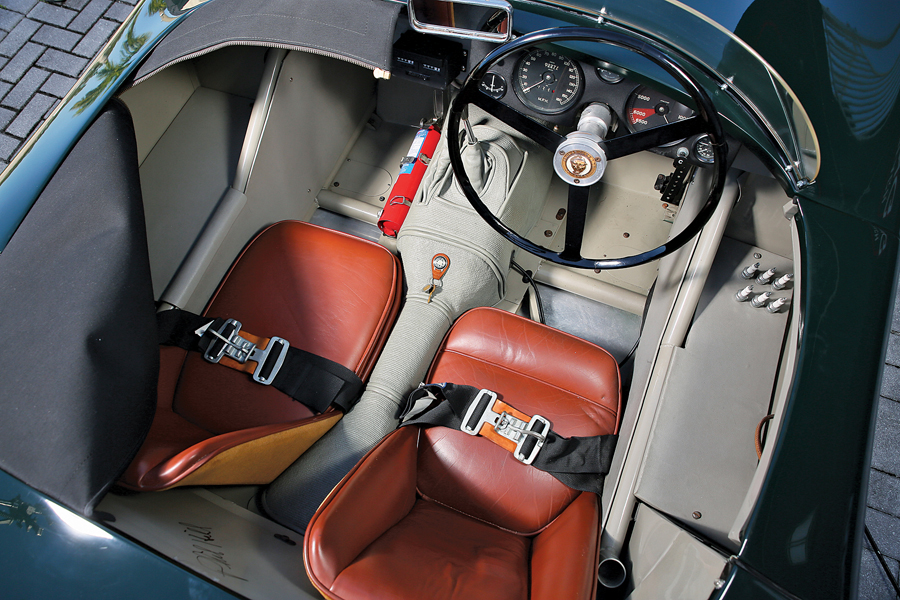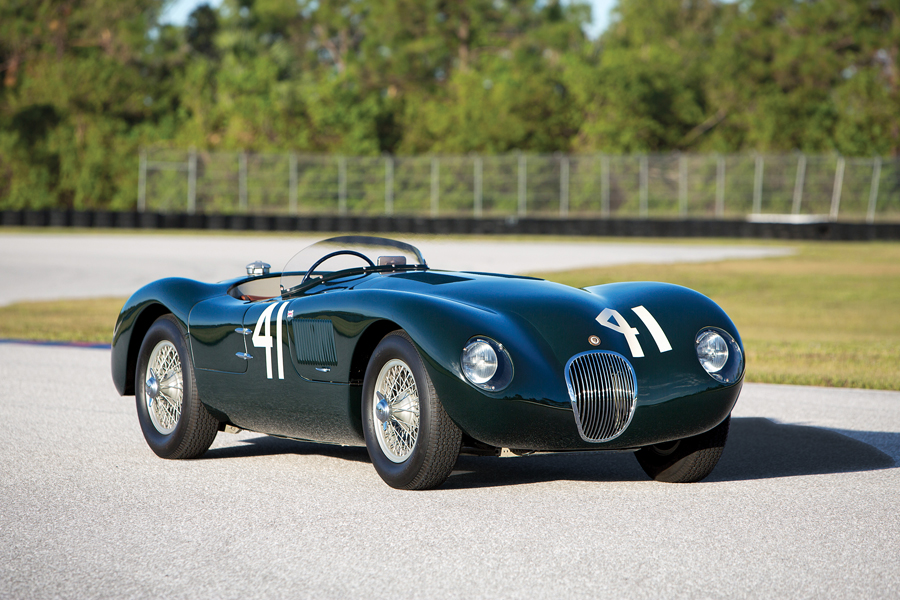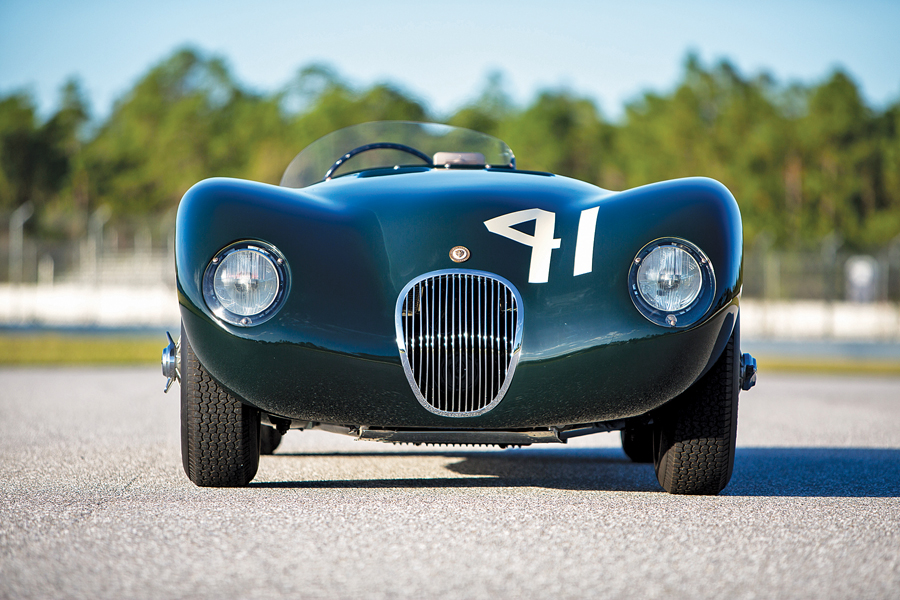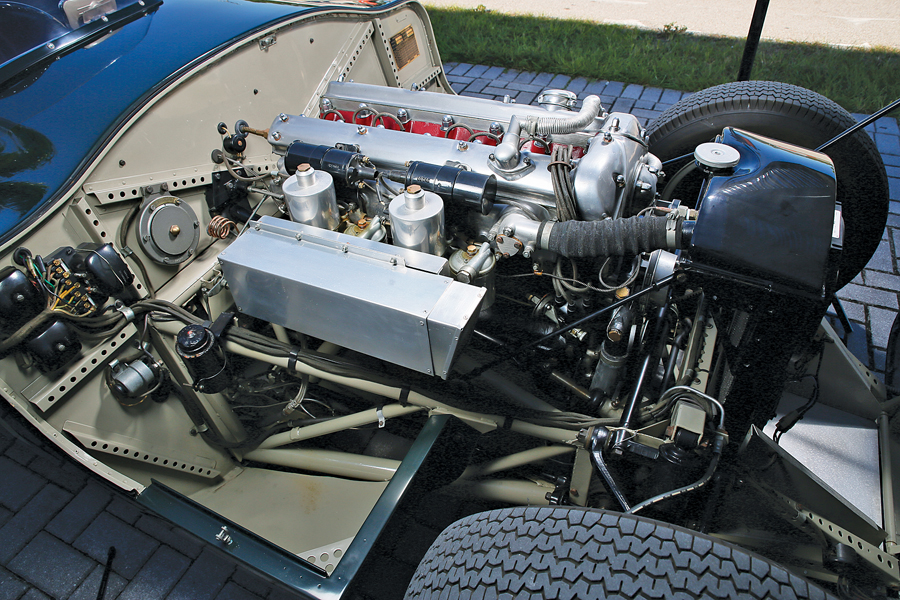SCM Analysis
Detailing
| Vehicle: | 1952 Jaguar C-Type |
| Years Produced: | 1951–53 |
| Number Produced: | 53 |
| Original List Price: | $6,500 ($60,000 in 2017 dollars) |
| SCM Valuation: | $5,736,000 |
| Chassis Number Location: | Top of left front suspension |
| Engine Number Location: | On head between cams |
| Club Info: | Jaguar Club of North America |
| Website: | http://www.jcna.com |
| Alternatives: | 1953 Ferrari 340 MM, 1951–53 Maserati A6GCS, 1953–56 Aston Martin DB3S |
| Investment Grade: | A |
This car, Lot 131, sold for $5,285,000, including buyer’s premium, at RM Sotheby’s New York “Icons” sale on December 6, 2017.
It’s easy to get confused — and possibly way too casual — when considering seriously big-number collector cars.
To the vast majority of those of us who follow the market for these things, $5,285,000 seems like all the money in the world for a racing Jag, but I’m pretty sure that this result was a serious disappointment to both the consignor and the auction company. Understanding why this might be will require some consideration of the various distinctions that exist at the high end of the collector car market — and the way the market is willing to value them.
The first modern post-war racing car
First we should talk about the car. Regular readers of my profiles will know that I have written multiple discussions of the various 1950s racing Jaguars and have visited the backstory too many times already, so I will dispense with that part. Suffice it to say that the C-type Jaguar took the world by storm as fundamentally the first truly modern racing car to appear after the war.
In a racing world dominated with ladder frames, relatively primitive suspensions, late-1930s concept engines and body designs more clumsy than efficient, the new Jaguar sparkled with new thinking.
Aerodynamicists and aircraft engineers who had learned their trade building warplanes conceived and designed the C-type.
The frame was a multi-tubular “space frame” that was both light and amazingly rigid. It even incorporated the beginnings of the monocoque construction techniques that have carried to present auto structures. The stiff frame allowed the suspension to be both supple and precise, which kept the tires attached to the road for better cornering and steering control.
Malcolm Sayer designed the body under the direction that it look similar to the production XK 120 but be lighter and more slippery. His new design had the same frontal area as the XK 120, but it had 22% lower aerodynamic drag and was far lighter.
By today’s standards the engine seems antique, but at the time it was a revelation in performance and reliability. It was conceived and built as a fully post-war design (although admittedly having stolen its concept from the pre-war Alfa Romeo 6C 2500 engine). It was arguably the first all-new British engine after World War II.
The C-type was dominant from its first time out, won the 1951 Le Mans race by nine laps — and set the standards by which all future racing cars would be judged. It was the first post-war paradigm shift in auto racing, was stunningly beautiful even by contemporary standards, and was (still is) a joy to drive, both at the track and on the open road.
The C-type ticks all the boxes for a serious racing-car collection.
Crown Jewels and Gems
When it comes time to understand the market for the top collector cars, I believe that it is necessary to differentiate between multiple sub-categories.
It is intuitively obvious that not every collector car is equally desirable, and I feel it is useful to identify groupings with a specific understanding that certain cars — more importantly, certain examples of a given car — can be perceived as belonging to one or another group depending on highly subjective criteria. How a given car is perceived can seriously affect its market value.
For the sake of this discussion, I will set the categories as Crown Jewels and Gems.
Crown Jewels are the absolute top, the cars that are so incredibly special and rare that, to those who can afford to play in that game, having them is more important than what you had to pay to get them. Possibly, in a Veblen Good kind of way, paying a lot is important.
The market value of these cars appears more a function of the quantity of acquisitive rich guys with money than anything else, and it seems likely to continue to grow for the reasonable future. Ferrari GTOs and Testa Rossas are classic examples of this group. If a Crown Jewel car becomes available, the only question is who has the deepest pockets and/or financial pain tolerance to win the fight to own it.
Gems sit immediately below Crown Jewels. Gems are cars that could be Crown Jewels, but they are available in such quantity that buyers can pick, choose and maybe wait for the next one before writing the check. This means Gems are less valuable and more subject to market whim (which for the past several years has been flat).
The C-type, with 54 built, fits in the Gems category, as does the Ferrari 250 SWB.
The important point here is that certain Gem cars, by dint of racing history or exceptional specialness of some sort, become perceived as Crown Jewels. Factory lightweight C-types and those with Le Mans success or storied ownership like Ecurie Ecosse make this jump, which can mean a 60% to 100% increase in perceived value over “ordinary” ones.
Why — and what could have been
Our challenge today is to consider not just what our subject car sold for, but what it maybe could have sold for, and why.
First, as to condition and correctness, I spoke with one of the top American anoraks of 1950s racing Jaguars, a man who had owned this car for years. He confirmed that this car was and is extremely correct and original. It was beautifully restored and maintained. It is as good a C-type as you are going to find.
History, though, is a bit more of an issue. This car was the first C-type in the United States, and it was raced for a few events (very successfully) by Phil Hill before ending up as an undistinguished California club racer — and eventually a street ride.
The problem is that racing Jags all made their reputation in European competition, so excellent international successes are essential to one being perceived as a Crown Jewel. This car doesn’t have those crucial European race wins.
The current market
Let’s accept that this was an excellent Gem C-type. Where is the market now?
My specialist contacts all feel that £4.7 million to £4.9 million ($6.3 million to $6.6 million, as racing Jags are always valued in pound sterling) was a reasonable expectation.
So this car came up seriously short. Why?
One conjecture has to do with venue. Certain cars seem to sell better in certain locations, and putting this 1952 C-type into a New York “Predators’ Ball” event focusing on Crown Jewels may have been exposing it to the wrong market. Goodwood, London, or another European sale might have gotten a stronger response.
Also, although the condition was undoubtedly necessary for New York, the car seemed way too polished. The best C-types and D-types are always a bit scruffy and race worn in their presentation — it gives them an honest feel.
It is also distinctly possible that the market for Gem cars is softening, and this is the new fair market. My sources are unconvinced of this, but even if so, the successful bidder got an excellent car for his money.
I think this sale was an outlier and the buyer should be pleased; I consider it to have been very well bought. ♦
(Introductory description courtesy of RM Sotheby’s.)
